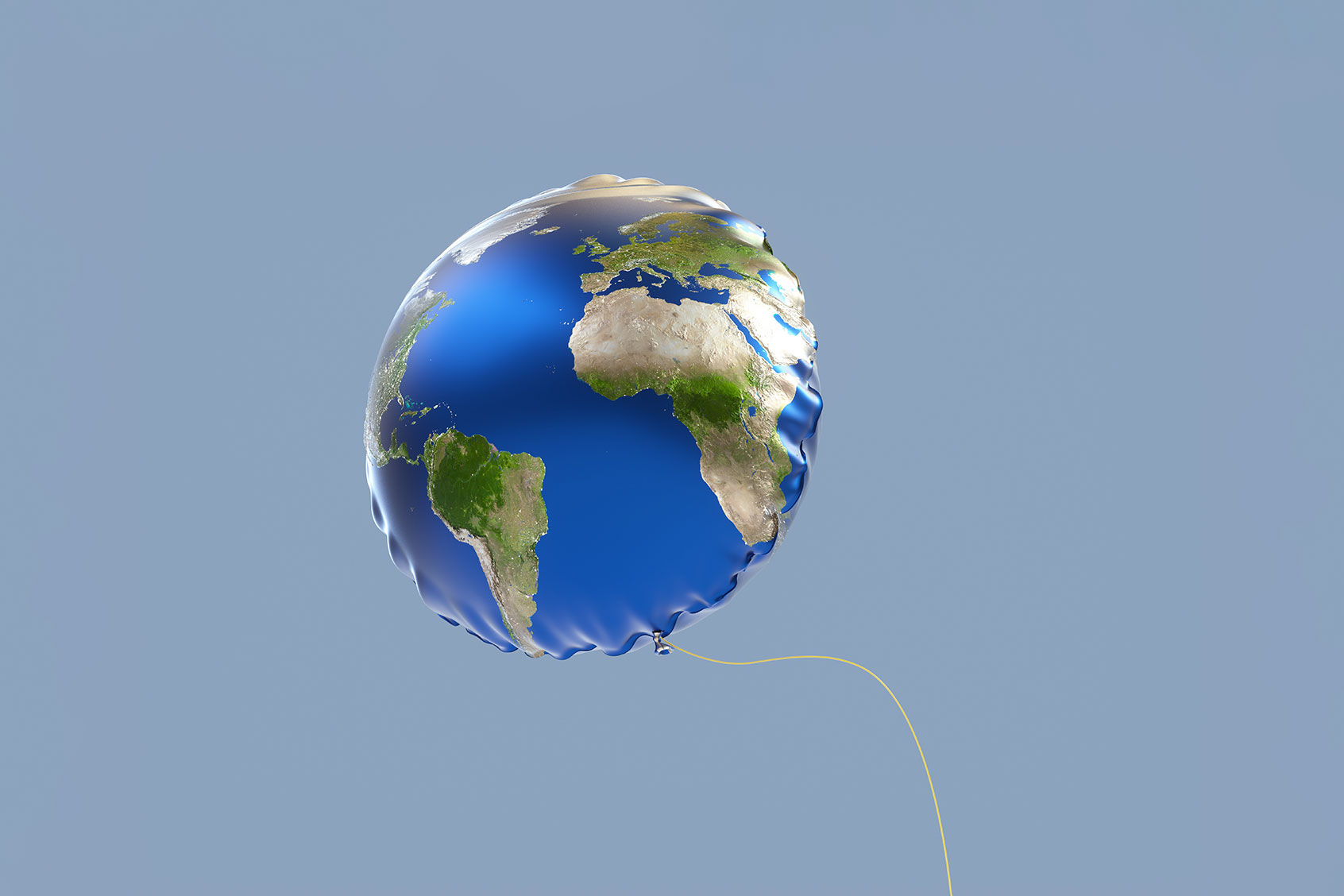When people hear of a helium leak, they likely imagine a comical scenario involving party balloons and high-pitched voices. Yet scientists from the California Institute of Technology and the Woods Hole Oceanographic Institution suspect that, like a human who has yet to fully burp out a gassy meal, Earth has pockets of helium from when it was formed that it has yet to fully release. They published their findings in a recent study in the journal Nature, and in the process may have redefined how researchers look at America's own geological history.
"Here we report the highest magmatic 3He/4He ratio… yet measured in terrestrial igneous rocks."
Helium is one of the most abundant elements in the entire universe, second only to hydrogen, so it's no surprise there was helium around when Earth first formed billions of years ago. Nonetheless, scientists have long operated under the assumption that any helium on Earth's surface would, because it is so light, eventually float into space or that the majority of the light noble gas would have been expelled during 4.6 billion years of volcanic eruptions. Or the helium could have been kicked off the planet by the large number of massive impacts our Earth has outlived, including the rock that crushed most of the dinosaurs and when the Moon was formed from a collision with a Mars-sized planet.
Undercutting this assumption, however, is the discovery of some of the world's highest ratios of helium 3 (3He) and the heavier isotope, helium 4 (4He) in the basaltic lavas on Canada's Baffin Island. Geologists believe that the most likely explanation for the presence of all this helium is that there is a literal helium leak in Earth's core. (No, it's not likely to make anyone's voice sound funny.)
"Here we report the highest magmatic 3He/4He ratio(67.2 ± 1.8 times the atmospheric ratio) yet measured in terrestrial igneous rocks, in olivines from Baffin Island lavas," the scientists write. "We argue that the extremely high-3He/4He helium in these lavas might derive from Earth’s core."
The researchers took a number of steps to verify their hypothesis. For one thing, they accounted for the ratios of other isotopes including strontium and neodymium so that they could rule out variables that might have caused the helium to appear as it did after it was erupted to the surface. They also found that the ratio isotopes for a different noble gas, neon, matches the conditions believed to have existed on Earth when the planet was formed millions of years ago. These isotope ratios helped the scientists deduce that the helium did not come from Earth's mantle, but must have originated from the core. Among other things, this means scientists will be able to see what other materials are in that area to learn more about the composition of Earth's core, which is notoriously difficult to study given it is deep underground.
The latest report is a follow up to an earlier discovery several year ago. Woods Hole Oceanographic Institution geochemist Forrest Horton discovered helium isotope ratios in olivine samples from the Baffin lava fields that had up to 50 times the concentrations found in atmospheric levels. This was a high amount of helium isotopes even for Earth's mantle, and that disproportionate concentration was also in Icelandic crusts believed to sit on a section of crust above a unique location in terms of monitoring mantle activity.
Want more health and science stories in your inbox? Subscribe to Salon's weekly newsletter Lab Notes.
Among other things, this means scientists will be able to see what other materials are in that area to learn more about the composition of Earth's core, which is notoriously difficult to study.
This is not the only news story from 2023 to potentially transform how people view Earth's core. A study published in January in the journal Nature Geoscience revealed that the inner core had started rotating in approximate synchrony with Earth's around 2009 but, as of early 2023, had actually started rotating at a slower pace than the rest of the planet — and may have indeed outright "paused."
"It has effects on the magnetic field and the Earth's rotation, and perhaps the surface processes and climate," Xiaodong Song, the leading author on the study and a geoscientist at Peking University responsible for pioneering work in 1996 on the inner core, told Salon by email at the time. "It may have a long-term effect (decades and centuries), but the effect on daily life is likely small." Other scientists, however, challenged Song's conclusion.
"This study misinterprets the seismic signals that are caused by episodic changes of the Earth's inner core surface," Lianxing Wen, a seismologist at Stony Brook University, told The Washington Post, also writing that the claim that the inner core rotates independently of the surface "provides an inconsistent explanation to the seismic data even if we assume it is true."
Similarly John Vidale, a geophysicist at the University of Southern California who was not involved in the study, told Salon that "people argue that maybe the boundary is moving by kilometers, perhaps the core is spinning tens of kilometers, which probably has almost no effect up on the surface. Since we don't actually know what's happening, we really don't know. So I guess I can't really tell you what it is that we don't know" as to whether there is anything to be concerned about in terms of the inner core's behavior.
We may think we know a lot about the Earth's core, but new research is consistently surprising us, not least of which is our mysterious core is leaking helium like a saggy balloon.
Read more
about planetary science


